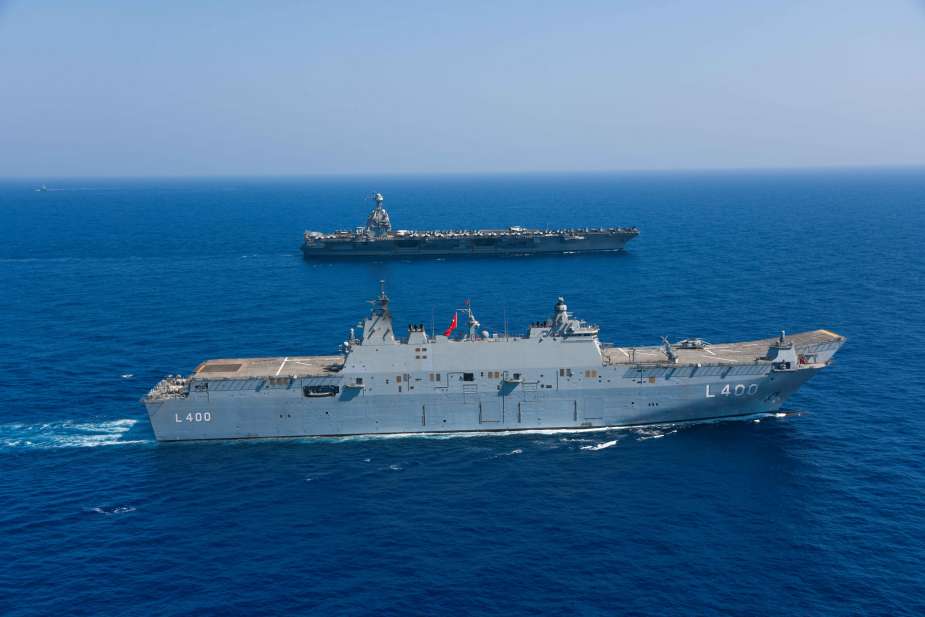Breaking news
US Navy's aircraft carrier USS Gerald R. Ford visits Türkiye after drills with TCG Anadolu.
According to information published by the US DoD on August 25, 2023, the U.S. Navy's premier aircraft carrier, the USS Gerald R. Ford (CVN 78), accompanied by Carrier Strike Group (CSG) 12, made its arrival in Antalya, Türkiye.
Follow Navy Recognition on Google News at this link
 Turkish amphibious assault ship TCG Anadolu sailing with the aircraft carrier USS Gerald R. Ford. (Picture source: Dvids)
Turkish amphibious assault ship TCG Anadolu sailing with the aircraft carrier USS Gerald R. Ford. (Picture source: Dvids)
Before docking in Antalya, the Gerald R. Ford Strike Group (GRFCSG) participated in joint exercises with Turkish Navy ships including the TCG Anadolu, Goksu, Gediz, and others, as well as the Turkish Air Force’s F-16s, KC-135s, and P-72s. These activities are designed to boost mutual understanding of maritime strategies and further enhance security in the Mediterranean.
This visit follows the recent anchoring of the USS Mount Whitney (LCC 20) in Istanbul and the concurrent visit of the USS Normandy (CG 60) to Aksaz, showcasing the U.S. Navy's consistent collaboration with its Turkish allies.
Comparison between TCG Anadolu and USS Gerald R. Ford
The TCG Anadolu is primarily designed as an amphibious assault ship and can also function as a V/STOL (Vertical/Short Take-Off and Landing) aircraft carrier.
With a displacement ranging from approximately 24,660 tons to 27,436 tons depending on its configuration, it's a relatively smaller warship. Its length and beam are 232 meters and 32 meters respectively.
The propulsion system of the TCG Anadolu comprises Navantia Man Diesel Generators and Siemens SiPOD, which enable it to achieve a maximum speed of 21 knots.
Its endurance without replenishment is 30 days, but it can last up to 50 days with sufficient supplies. The TCG Anadolu's capacity includes various UAVs, helicopters, armored vehicles, and landing craft.
Its armament consists of the RAM, Phalanx CIWS, and several other defensive systems. The TCG Anadolu has the versatility to operate aircraft like the F-35B or drones like the Bayraktar TB3 and Kızılelma.
In contrast, the USS Gerald R. Ford is a full-fledged aircraft carrier, primarily built to project power and establish naval air superiority. It is significantly larger, with a displacement of about 100,000 long tons.
The Gerald R. Ford measures between 1,092 ft to 1,106 ft in length and has a beam of 134 ft at the waterline, which extends to 256 ft on the flight deck. Its nuclear propulsion system, powered by two Bechtel A1B PWR nuclear reactors, gives the Gerald R. Ford an incredible speed exceeding 30 knots and allows it to operate for roughly 25 years before needing a mid-life refuel.
The ship has a complement of 4539 personnel, including its air wing. The Gerald R. Ford's armament is primarily defensive and includes surface-to-air missiles, Phalanx CIWS, and machine guns. One of its most notable features is its ability to carry more than 75 aircraft, emphasizing its role as a formidable naval air power platform.


























